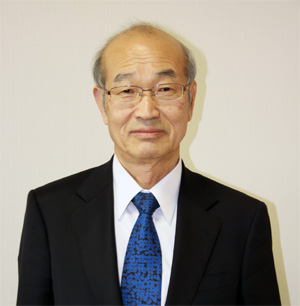The world market has been hit by a tremor since the New Year. Stock prices around the world have been greatly shaken, and crude oil prices have continued to plummet as if they had hit rock bottom. The epicenter is China. China's stock market has crashed since the beginning of the year, due in part to the mismanagement of stock price stabilization measures by securities regulators (such as the emergency introduction of a circuit breaker system that stops trading during a crash). This has spread to stock markets around the world, including Tokyo, Europe, and the United States. Crude oil prices have been falling since last year, but as of late January, there is no sign of hitting bottom. The basic background to this is thought to be the global contraction of crude oil demand due to the slowdown of the Chinese economy. Ultimately, the cause is the slump in the Chinese economy, which has become clear since last year. In mid-January, the National Bureau of Statistics announced various economic indicators for last year, so let's use this to analyze the current state of the Chinese economy. We can see that the Chinese economy is in the midst of structural change.
The first thing to note is that the economic growth rate has clearly been declining. In 2015, the growth rate of real GDP (gross domestic product) was 6.9%, below 7%. The Chinese economy had sustained double-digit growth for a long period of time, but this high growth came to an end in 2010 (10.4%) and has since declined year by year, reaching 7.4% in 2014. The government set a growth target of 7.0% for 2015, but in the end, it fell just short of this target. Compared to the 14.2% growth achieved in 2007 before the Lehman Shock, this means that the growth rate has fallen to exactly half. It is safe to say that there has clearly been a structural change in the growth path.
What is interesting is the rapid change in the content of GDP. Looking at it by industry, the tertiary industry accounted for more than half of GDP for the first time, at 50.5%. The secondary industry, centered on manufacturing, accounted for 40.5%, exceeding this by 10 percentage points. This is a stark change from just five years ago, in 2010, when the secondary industry accounted for 46.2% and the tertiary industry for 44.2%. This shows that the industrial structure is rapidly shifting towards a service economy, following in the footsteps of Japan and Western countries. This shows that the maturation of the economy is progressing rapidly.
This point becomes even clearer when we look at GDP from the demand side. Final consumption, which combines household consumption and government consumption, accounted for 66.4% of GDP, up from 51% in 2014. It is hard to believe that the composition ratio could rise by 15 percentage points in just one year, but perhaps we should view this as a sign that both production and demand structures are changing at an unimaginable speed.
The figure for retail sales of consumer goods, announced at the same time, increased by 10.7%, with online sales in particular surging by 33.3%.
Behind this rapid shift to a service economy, the problem of oversupply in manufacturing industries, including steel, is becoming apparent.
In light of Japan's experience, manufacturing was the driving force behind Japan's high economic growth. This is because technological innovation in the production process leads to a dramatic increase in productivity in the manufacturing industry. Manufacturing products such as home appliances were absorbed by robust domestic demand in households and through exports, realizing high economic growth. This was probably the case in China up until around 2010. However, as durable consumer goods become more widespread and the shift to a service economy progresses, the growth rate will inevitably decline. China appears to be making a rapid transition to this stage.
On the other hand, there is a strong view that China's growth rate will inevitably decline even when viewed from the perspective of economic supply capacity. For example, in his recent book, "China's 'New Normal' Economy," Nomura Research Institute's Chi-Hsiung Guan states that the turning point was around 2010, when limits began to become apparent in the supply of labor from rural areas to urban areas. This means that China is passing what is known in economics as the "Lewis Turning Point," a turning point at which the supply of labor from rural areas to large cities decreases and the infinite supply of labor comes to an end. If this is the case, there is a high possibility that growth potential will be restricted by supply capacity. Japan is said to have passed this turning point in the 1960s.
As mentioned above, the Chinese economy is undergoing a period of structural transformation in terms of both demand and supply. I believe that the global economy will continue to be affected by this for some time to come, for better or worse.
(Jan. 22, 2016)

[Profile of Shigeo Uchida]
Born in 1941. Graduated from the Faculty of Economics at Keio University in 1965 and joined the Nihon Keizai Shimbun. After working in the Securities Department of the Editorial Department, the Japan Center for Economic Research, head of the Securities Department at the Tokyo Head Office and as an editorial writer, he is currently Managing Director the Chiba Gakuen School Corporation and Professor Emeritus Chiba University of Commerce.
<Major publications>
"Seminar: Introduction to the Japanese Economy" (co-author, Nihon Keizai Shimbun)
"Showa Economic History (Part 2)" (co-author, Nihon Keizai Shimbun)
"The New Japanese Economy" (co-author, Nihon Keizai Shimbun)
"History of Japanese Securities 3" and "Now You Can Understand! How the Japanese Economy Works" (sole author, Nihon Keizai Shimbun, Inc.)
"New Introduction to the Japanese Economy" (co-author, Nikkei Publishing Inc.) and others